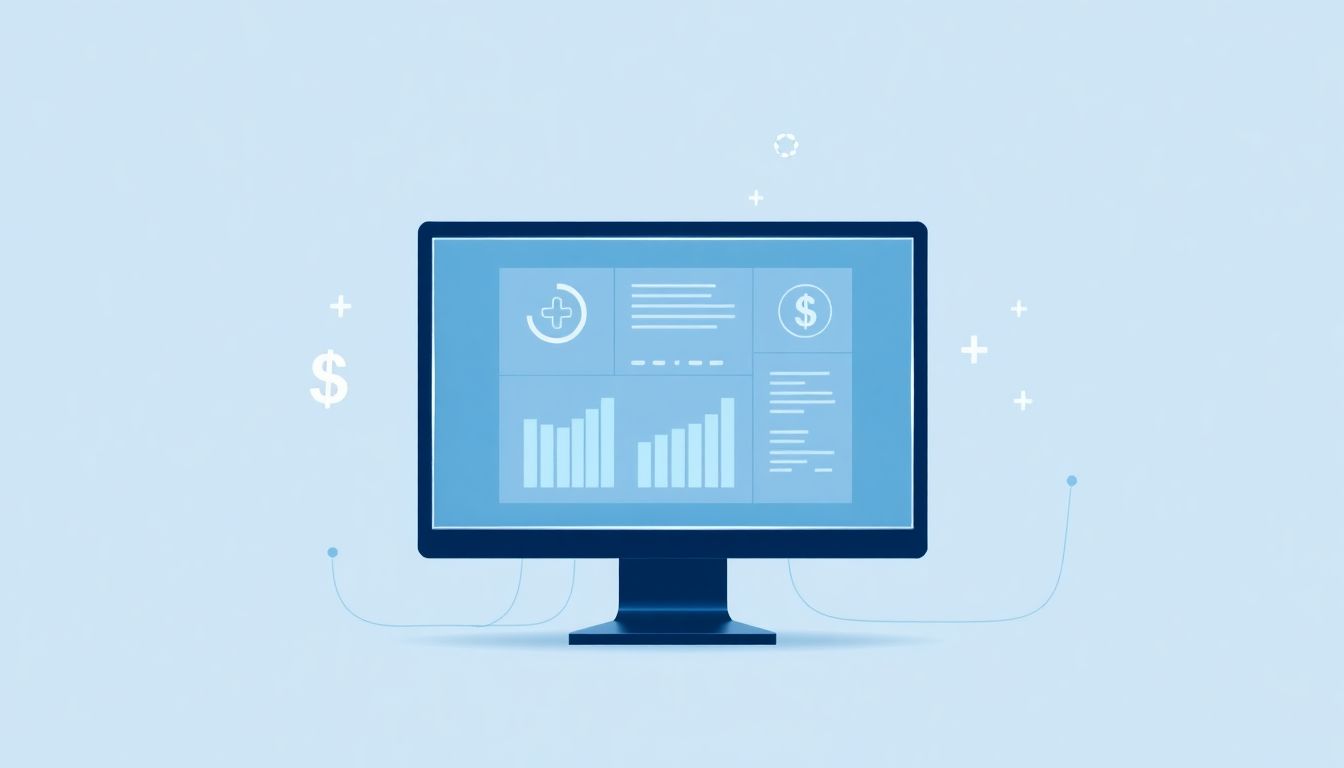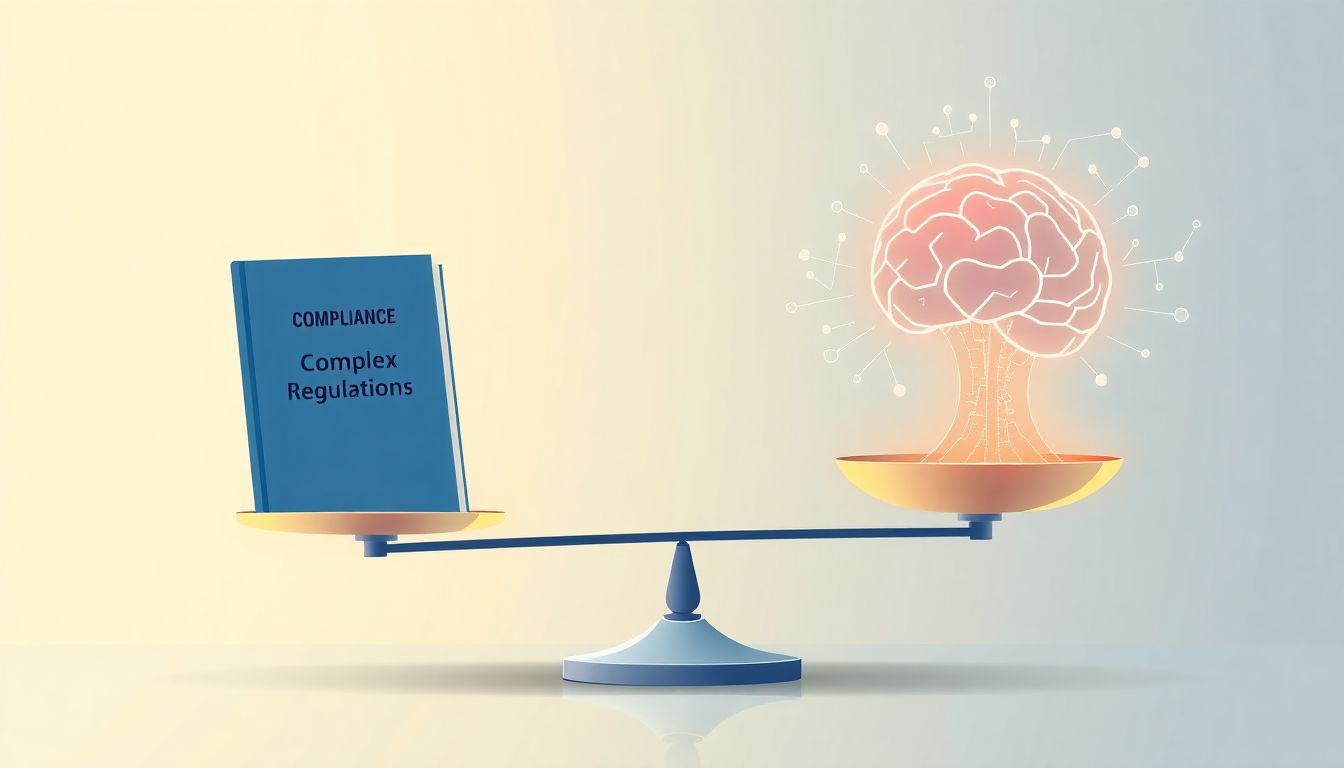Regulatory compliance can feel like trying to navigate a maze while blindfolded—frustrating and overwhelming, right? Many businesses struggle with keeping up with the ever-changing rules and regulations, which can lead to costly mistakes and serious penalties. You’re not alone in this!
But what if I told you that there’s a way to make this daunting task simpler? Stick around, and I promise you’ll discover how ChatGPT can streamline compliance processes, helping you reduce risks and save valuable time.
From automating tedious tasks to providing real-time insights, you’ll see how embracing ChatGPT can be a game changer in your compliance strategy. Let’s dive in and uncover the potential!
Key Takeaways
- ChatGPT helps automate compliance tasks, reducing human error and saving time.
- It provides real-time updates on changing regulations, keeping businesses compliant.
- Using AI can enhance efficiency and reduce costs associated with compliance management.
- Common compliance risks include data privacy and financial regulation challenges.
- Implementing ChatGPT requires clear objectives and training for compliance teams.
- Regularly assess the effectiveness of AI in your compliance processes for ongoing improvement.

How ChatGPT Can Help Reduce Regulatory Compliance Risks
ChatGPT can significantly reduce regulatory compliance risks for businesses by leveraging AI-driven solutions.
Its natural language processing capabilities streamline compliance management by automating time-consuming tasks.
By providing accurate information and assisting in document generation, ChatGPT minimizes the risk of human error.
Its ability to analyze regulations rapidly means businesses can stay updated with changing compliance landscapes.
Incorporating ChatGPT into compliance workflows can lead to improved legal compliance and fewer penalties, ensuring a smoother operational flow.
For businesses looking to integrate this technology, consider using these prompts:
- “Summarize the latest regulations related to [specific industry] and their implications for compliance.”
- “Help me draft a compliance plan for our business that meets [specific regulatory framework].”
- “What are the common compliance pitfalls in [specific industry], and how can we avoid them?”
Understanding Regulatory Compliance and Its Importance
Regulatory compliance refers to the set of laws and guidelines businesses must follow to operate legally and ethically.
It’s crucial for maintaining trust and integrity in the marketplace, as it governs how companies conduct business.
Failure to comply can result in severe penalties, including fines or legal action, which can cripple a business.
A strong compliance strategy safeguards a company’s reputation and mitigates financial and legal risks.
Understanding the various regulatory frameworks applicable to your industry is the first step in ensuring compliance.
For more insight, check out our post on ChatGPT for Legal Services, which explains how AI can assist in navigating compliance complexities.
Common Compliance Risks Businesses Face
There are numerous compliance risks that businesses encounter daily, and recognizing them is vital for risk mitigation.
Data privacy risks are a major concern, especially with regulations like GDPR and CCPA that enforce strict data handling practices.
Financial regulations can pose additional challenges, where non-compliance could lead to audits and financial penalties.
Sector-specific challenges emerge due to unique regulatory demands, making it critical for firms to tailor their compliance strategies accordingly.
Operational risks can also arise from inadequate training or mismanagement of compliance documentation, leading to lapses.
How ChatGPT Automates Compliance Processes
ChatGPT excels at automating compliance processes, making it a valuable tool in compliance management.
For instance, it can generate regulatory documentation, ensuring that businesses meet legal requirements without extensive manual work.
Moreover, ChatGPT can streamline compliance workflows by managing tasks like data collection and report generation efficiently.
Automated compliance assessments are another strong suit, allowing businesses to evaluate their compliance status quickly.
By using natural language understanding, ChatGPT can interpret regulations, helping businesses stay compliant with evolving laws.
To implement this, consider these commands:
- “Create a checklist for compliance based on [specific regulation].”
- “Draft a report summarizing our compliance status in relation to [specific regulations].”
- “Analyze the implications of [specific regulation] on our business practices.”

Real-Life Examples of Using ChatGPT for Compliance
Using ChatGPT for regulatory compliance isn’t just theory; there are practical applications that demonstrate its effectiveness.
For instance, a financial services firm leveraged ChatGPT to automate their report generation for regulatory filings.
This not only saved hours of manual work but also improved the accuracy of the documents submitted.
In another case, a healthcare organization used ChatGPT to interpret new healthcare regulations, which minimized the risk of compliance breaches.
To see if your company could benefit, try these prompts:
- “Provide a case study of a company that successfully used AI for compliance management.”
- “List practical applications of ChatGPT in the compliance processes specific to [your industry].”
- “Summarize success stories involving ChatGPT and regulatory compliance.”
Benefits of Using ChatGPT in Compliance Management
The advantages of implementing ChatGPT in compliance management are substantial and far-reaching.
Firstly, it significantly boosts efficiency by automating repetitive tasks, allowing compliance teams to focus on higher-level strategies.
Additionally, ChatGPT reduces costs associated with compliance by minimizing the need for extensive manual labor.
Its ability to provide rapid and accurate compliance reports ensures that businesses maintain a proactive stance, reducing penalties and fines.
Also, using AI for compliance enables enhanced decision-making through data analytics.
To explore these benefits further, consider these commands:
- “Explain the efficiency gains achieved by using AI in compliance tasks.”
- “What cost-saving measures can we implement by integrating ChatGPT?”
- “How can ChatGPT improve our decision-making processes in compliance management?”
Best Practices for Implementing ChatGPT in Compliance Tasks
Implementing ChatGPT in compliance tasks requires a strategic approach for optimal results.
Start by setting clear objectives for what you want to achieve with AI in your compliance workflows.
Next, involve your compliance team in the integration process to ensure they understand and feel comfortable using the tool.
Training staff on ChatGPT usage is crucial; provide hands-on sessions to maximize their familiarity with the platform.
Also, regularly assess the effectiveness of AI in your compliance processes to identify areas for improvement.
Try these prompts to guide your implementation:
- “Outline the key objectives for AI integration in our compliance workflow.”
- “What training resources should we provide for our staff on using ChatGPT?”
- “Develop a framework for assessing the effectiveness of AI in compliance tasks.”

Limitations of ChatGPT in Compliance Contexts
While ChatGPT offers numerous advantages, it comes with limitations that businesses need to be aware of.
One notable concern is accuracy; although ChatGPT processes large volumes of information, it can misinterpret complex regulations.
This means that relying solely on AI for compliance could lead to unintentional violations, so it should be used as a supporting tool rather than a replacement.
There’s also the challenge of data quality; if the information fed into ChatGPT is outdated or incorrect, the output will reflect those inaccuracies.
Ethical considerations are paramount as well; businesses must ensure that AI-generated recommendations are in line with ethical standards and legal obligations.
To mitigate these risks, incorporate manual reviews of compliance outputs from ChatGPT.
You might consider these prompts to explore its limitations:
- “Identify potential pitfalls of using AI in our compliance processes.”
- “Discuss ethical concerns related to AI-generated compliance decisions.”
- “Evaluate the limitations of ChatGPT in understanding complex regulations.”
Future Trends in AI and Regulatory Compliance
The landscape of AI and regulatory compliance is continuously evolving, with exciting trends on the horizon.
One major trend is the development of intelligent compliance frameworks that adapt as regulations change, making it easier for businesses to stay compliant.
Additionally, as regulatory bodies increasingly recognize the role of AI, we can expect more guidelines that govern its use in compliance contexts.
Another trend to watch is the integration of machine learning in compliance monitoring, which allows real-time updates and assessments of compliance statuses.
Businesses are also looking towards enhanced collaboration tools that combine human expertise with AI capabilities for improved outcomes.
As these trends unfold, it’s essential for companies to stay proactive, adapting their compliance strategies accordingly.
Explore future possibilities with these prompts:
- “What future trends might influence AI in regulatory compliance over the next five years?”
- “Identify emerging technologies that could enhance compliance management.”
- “Discuss how regulatory changes may impact the utilization of AI in compliance tasks.”
FAQs
Regulatory compliance involves adhering to laws and regulations set by governing bodies. It’s crucial as non-compliance can lead to penalties, legal issues, and damage to reputation, ultimately impacting business sustainability.
ChatGPT can automate compliance processes by generating reports, tracking regulatory changes, responding to inquiries, and managing documentation, thus reducing manual effort and ensuring timely compliance updates.
Limitations include potential inaccuracies in interpreting complex regulations, reliance on historical data, and lack of human oversight. ChatGPT should be used as a supplement to, not a replacement for, expert compliance judgment.
Benefits include improved efficiency, accuracy in information retrieval, reduced compliance costs, and enhanced responsiveness to regulatory changes, leading to a more streamlined compliance management process.
